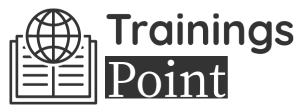Successful leaders know that the survival of our organization during this uncertainty depends not just on the technical skills within our team, but also on their ability to deal respectfully and collaboratively with their colleagues and customers and remain energized at the same time.
We all have people who push our buttons and create drama in our lives. Within our team, these interactions can drain our energy, take us off track, and infect other areas of our lives. By focusing on effective ways to work with negative and difficult people, you will be able to increase productivity, collaboration, customer service, and overall engagement.
Negativity Costs. Many of us have learned to avoid, rather than deal with the bullies, know-it-alls, and other difficult people on our team because it is easier than confronting the source of the problem. But, overlooking the problem is the worst thing we can do.
We have more impact than we might think. Under stress and surrounded by uncertainty, some people are simply more difficult to deal with.
What we can change is our reaction. Reducing the drama within our team depends on being able to understand and respond appropriately to their behaviors.
Learn successful strategies and tips for building a positive, productive workplace by knowing WHAT to focus on to move these interactions forward, HOW to effectively respond, and WAYS to manage the impact of their behavior. End frustration. Act rather than react, and ensure a respectful, effective, and collaborative team.
WHY SHOULD YOU ATTEND?
Through COVID-19 we are seeing that stress, fear, and uncertainty impact how we communicate, collaborate, and engage. Research shows that there is a direct relationship between an increase in stress and negativity and the resulting difficult behaviors in our organizations.
How you and your team effectively deal with negative and difficult people can mean the difference between having a toxic, drama-filled workplace, and an engaged, collaborative, and productive organization.
AREA COVERED
Key Messages:
- Negative attitudes decrease the ability to problem-solve, effectively communicate and collaborate, and increase the risk of mental health issues, absenteeism, and difficult behaviors such as backstabbing, finger-pointing, and gossiping
- Not dealing with negativity and difficult behaviors robs us of time and energy
- Negative attitudes and difficult behaviors are contagious and can create a toxic workplace culture
- Leaders who can appropriately manage any negativity and difficult behaviors will create teams that can effectively collaborate and thrive through this challenge, and those organizations that try to simply ignore those people and attitudes will struggle to be productive, service their customers, and be competitive
Participants Will:
- Develop an understanding for those exhibiting typical difficult behaviors in order to effectively meet their needs and move the interactions forward
- Identify and control the impact of difficult people so that you can keep the situation from escalating further
- Increase insight and differentiate the 4 types of attitudes and understand how they develop in order to keep your cool in a variety of situations
- Utilize various verbal and non-verbal communication techniques and situational strategies that you can use to de-escalate and effectively handle upset people
- Learn how to gain control and handle these situations by identifying the payoff
- Uncover the secret to moving difficult conversations forward.
- Know how to act, not react, in solving situations so that you can lead with more confidence, feel less stress, and gain more success in working and interacting with your team
WHO WILL BENEFIT?
- Human Resources Professionals
- Health and Safety Reps
- Union Reps
- Supervisors, Managers, Directors (Team Leads)
- Executive Directors Not-For-Profit
- Business Owners, Entrepreneurs
- C-Suite
Through COVID-19 we are seeing that stress, fear, and uncertainty impact how we communicate, collaborate, and engage. Research shows that there is a direct relationship between an increase in stress and negativity and the resulting difficult behaviors in our organizations.
How you and your team effectively deal with negative and difficult people can mean the difference between having a toxic, drama-filled workplace, and an engaged, collaborative, and productive organization.
Key Messages:
- Negative attitudes decrease the ability to problem-solve, effectively communicate and collaborate, and increase the risk of mental health issues, absenteeism, and difficult behaviors such as backstabbing, finger-pointing, and gossiping
- Not dealing with negativity and difficult behaviors robs us of time and energy
- Negative attitudes and difficult behaviors are contagious and can create a toxic workplace culture
- Leaders who can appropriately manage any negativity and difficult behaviors will create teams that can effectively collaborate and thrive through this challenge, and those organizations that try to simply ignore those people and attitudes will struggle to be productive, service their customers, and be competitive
Participants Will:
- Develop an understanding for those exhibiting typical difficult behaviors in order to effectively meet their needs and move the interactions forward
- Identify and control the impact of difficult people so that you can keep the situation from escalating further
- Increase insight and differentiate the 4 types of attitudes and understand how they develop in order to keep your cool in a variety of situations
- Utilize various verbal and non-verbal communication techniques and situational strategies that you can use to de-escalate and effectively handle upset people
- Learn how to gain control and handle these situations by identifying the payoff
- Uncover the secret to moving difficult conversations forward.
- Know how to act, not react, in solving situations so that you can lead with more confidence, feel less stress, and gain more success in working and interacting with your team
- Human Resources Professionals
- Health and Safety Reps
- Union Reps
- Supervisors, Managers, Directors (Team Leads)
- Executive Directors Not-For-Profit
- Business Owners, Entrepreneurs
- C-Suite
Speaker Profile
 Beverly Beuermann-King
Beverly Beuermann-King
With an impressive track record spanning over 25 years, Beverly has been guiding her audiences toward mastering their reactions to stress, cultivating a culture of resilience, and achieving thriving, engaged lives through her innovative S-O-S Principle™ and Work Smart Live Smart presentations. Beverly works with teams and leaders to shift from stressed out to resilient, enabling them to be more engaged, productive, and healthy.
Upcoming Webinars

FDA Compliance And Laboratory Computer System Validation

The Anti-Kickback Statute: Enforcement and Recent Updates

Creating a Successful Job Rotation Program

Transforming Anger And Conflict Into Collaborative Problem …

Aligning Your HR Strategy with Your Business Strategy

How To Create Psychological Safety in your Organization

How to Give Corrective Feedback: The CARE Model - Eliminati…


Zero Acceptance Sampling to Reduce Inspection Costs

AI at Your Service: Enhancing Your Microsoft OfficeSkills w…

Identifying, Managing, and Retaining High Potential Employe…


Why EBITDA Doesn't Spell Cash Flow and What Does

Female to Female Hostility @Workplace: All you Need to Know

Human Factors Usability Studies Following ISO 62366 and FDA…

Developing and Implementing Quality Culture in the Organiza…

Dealing With Difficult People In Life & Work

How to Document Employee Discussions and Why it is Important

Project Management for Non-Project Managers - How to commun…

FDA Recommendations for Artificial Intelligence/Machine Lea…

2-Hour Virtual Seminar on the 6 Most Common Problems in FDA…

Enhancing Pivot Tables with Images: Visualize Your Data Lik…

How to Deal with Employees Who Love to Argue and Debate Eve…

How to Write Contracts for Procurement Professionals

Project Management for administrative professionals

Sunshine Act Reporting - Clarification for Clinical Research


Reprogramming your mind for Corporate Excellence: 4 Steps t…

Terminating Toxicity: Strategies For Leaders To Confidently…

Transform Data into Insights: A Beginners Guide to Excel Pi…

Onboarding Best Practices for 2025: Proven Strategies to Po…

How to Manage the Legal Landmine of the FMLA, ADA and Worke…

Uplifting the Credibility of HR: How to Build the Credibili…

How to Write Effective Audit Observations: The Principles f…

Strategic Interviewing & Selection: Getting the Right Talen…


Bridging Generational Divides in the Workplace

Onboarding Best Practices for Millennial and All Employees

Performance of Root Cause Analysis, CAPA, and Effectiveness…


Emotional Intelligence: Mastering the Emotions of Great Lea…

FDA Audit Best Practices - Do's and Don'ts

2-Hour Virtual Seminar on How to Conduct an Internal Harass…

Successful Strategies for FDA Expedited Pathways for Your D…

Regulation update Q1 2025: New and Proposed Regulations for…

Unlock Employee Loyalty: Stay Interviews Will Keep Them Eng…

Pay Transparency in Action: Strategies for Building Trust a…

Excel Lookup Functions: VLOOKUP, HLOOKUP, and XLOOKUP Made …
